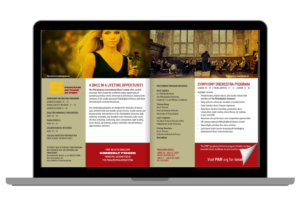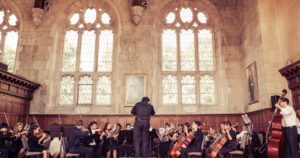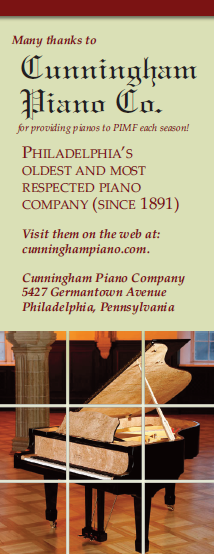Programming Classical Music for Kids
Most parents who appreciate classical music are anxious to expose their children to Bach, Beethoven, and Brahms. But in an era when classical often takes a proverbial back seat to more modern forms like pop, rock, and rap, getting kids to listen to – much less enjoy – music dating back to the 18th century can be a challenge.
Much like encouraging kids to enjoy healthy foods, persuading them to incorporate classical music into their personal playlists requires a strategy – a strategy aimed at overcoming the various obstacles to classical music appreciation.
Obstacle 1: Orchestras and orchestral music are rarely featured on television, the medium that most influences children.
Baby boomers may remember Leonard Bernstein’s popular “Young People’s Concerts,” 53 programs that aired between 1958 and 1972. While there is no comparable programming today, parents can display the numerous YouTube videos available under the category “classical music for kids.” For more subtle exposure, Classical Minnesota Public Radio contributor Susan Carraretto recommends that parents stream classical music into their homes via smart speakers, creating a classical atmosphere that children (and adults) can absorb naturally. Ms. Carraretto also suggests that children should listen to classical music (more Beethoven than Prokofiev I would imagine) while doing their homework.
Obstacle 2: Owing to budgetary cutbacks, some schools are curtailing – even eliminating – their music programs.
Parents can combat this trend by petitioning their school boards to provide adequate music funding, observing that home values are often depressed in communities without well-rounded educational opportunities (including music) – and real estate taxes fund schools.
Obstacle 3: Creating and curating a classical music program for kids requires attending to their personal musical tastes.
Perhaps the best solution is to leverage the labor of parents who have already confronted this dilemma and copy their homework. For example, Sara Mullett of Let’s Play Kids Music has identified the “14 Best Classical Music Tracks for Kids”. Her top three selections are:
- Johann Strauss – Tritsch-Tratsch-Polka, Op. 214 – “Great for skipping around to, good for imaginative movement.”
- Johann Strauss – Radetzky March, Op. 228 – “An obvious choice for marching, banging on drums and pretending to be a soldier!”
- Pyotr Ilyich Tchaikovsky – The Nutcracker Suite, Op. 79a – “Who wouldn’t want to be a sugar plum fairy or march like a tin soldier? Great variety – not just limited to Christmas and your children might already recognize it if they like the film ‘Elf’.”
Obstacle 4: Children need to experience classical music live to comprehend its beauty, power, and majesty.
While parents can invest in orchestra seats for their kids, a better approach (at least initially) might be a Pops concert, which blends classical and contemporary fare. Options in the Delaware Valley include the Philly Pops, the Ocean City Pops, and the Jersey Shore Pops. After they’ve sampled a live Pops performance, consider treating them to The Philadelphia Orchestra for a more immersive classical experience.
The main thing to keep in mind is that wherever you live in the country (or world), there is almost certainly a variety of classical music for kids! And no matter you decide to address your child’s music education, it’s important to start early, when valuable habits can be formed.




